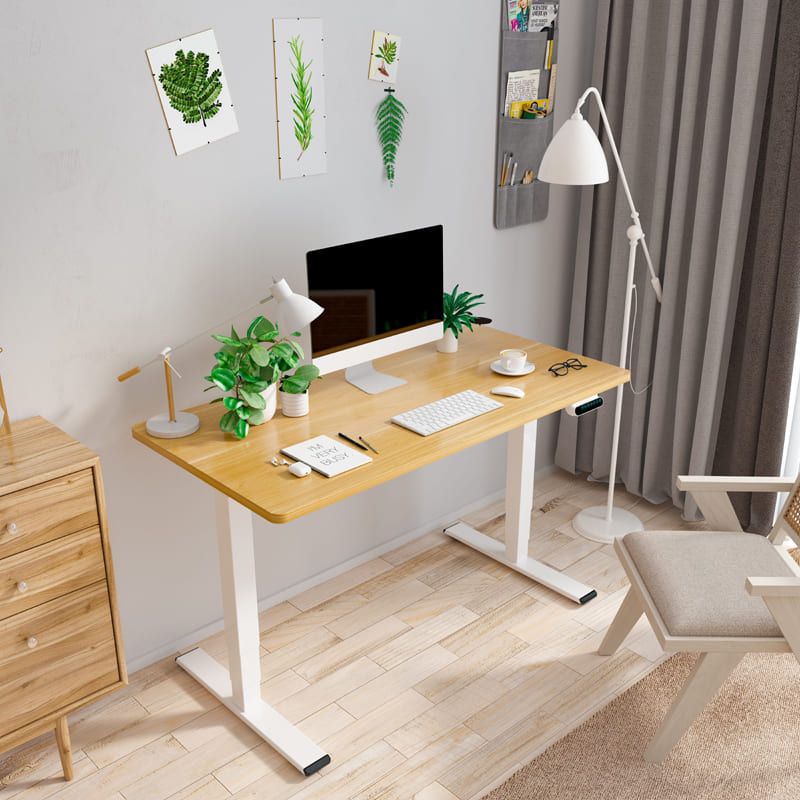Here at Flexispot, we receive tons of questions about the fundamentals of ergonomics.
As a pioneer and thought leader on the subject we are happy to dive into the nitty-gritty about good ergonomic design, how ergonomics can solve numerous muscular and skeletal issues, and what products are best suited to meet individual needs.
Better yet, we have compiled our commonly asked questions into a detailed FAQ so all our readers can benefit from sage advice straight from our ergonomic specialists.
So, without further ado, here are the answers to your burning questions about ergonomics.
What is Ergonomics?
May sound like a basic question, but ergonomics is much more than adjustable chairs and standing desks.
Ergonomics is an applied science that positions and arranges items within the environment to ensure maximum productivity, comfort, and safety.
Ergonomics is the study of one’s efficiency within the environment. Ergonomics encompasses physical and emotional wellbeing and is concerned with human engineering.
What Are the 3 Types of Ergonomics?
Ergonomics is concerned with the factors:
- Physical
- Cognitive
- Organizational
Physical ergonomics is what most are familiar with. It is the study of how humans interact with their environment and the tools they use to complete their work. Physical ergonomics is one of the most important types of ergonomics that is concerned with the safety and comfort of the individual.
Cognitive ergonomics is about emotions and mental load. It is the study of how people process data. Employers aim to promote healthy cognitive ergonomics with visible signs, regular breaks, and supportive networking opportunities to maintain satisfaction and boost morale among their staff.
Organizational ergonomics focuses on the company as a whole. This is the study of how departments interact with each other in efforts to improve communications and increase output.
Are Ergonomics Important?
Ergonomics is important within the workplace and to you, the individual.
Ergonomics is a scientific method that has holistic features. Ergonomic specialists work to help people maximize comfort and safety and to help organizations grow by maintaining healthy working environments.
Good ergonomics helps you to negate physical strain or injury during long work hours. Ergonomics also provides methods to help you concentrate for longer, and to maintain inner peace and wellbeing as you conduct your workday.
Ergonomics primarily protects the core of who you are - your musculoskeletal system. Without the support of this foundational system, you can be left vulnerable to injury and illness.

What Are the Benefits of An Ergonomic Workstation?
There are lots of benefits to having an ergonomic workstation that goes beyond the obvious.
Ergonomic workstations prevent repetitive strain injury and can improve your productivity levels by maximizing comfort - helping you to work harder for longer.
Other benefits of ergonomic workstations include:
- Better work/life satisfaction
- Better safety
- Improved quality of work
- Increased engagement with tasks
- Reduced costs
Ergonomic workstations reduce costs whether you work within an office or from home. When you remove the risk of injury, you also remove the likelihood of sick days, early or late starts, or long periods of absence for more serious treatments.
Is Ergonomics A Fad?
Ergonomics has been around for as long as humans have been interacting and manipulating their environments
Ergonomics, put simply, is maximizing productivity while reducing risk. Our ancestors created tools specifically for this reason. They created basic tools to make hunting and cooking easier with fewer injuries.
So, if ergonomics is a fad, it is the longest-running fad in human history!
Today, ergonomics is a dedicated science, the results of which can be seen everywhere. Seating in theatres, supermarket layouts, even the shape of a childs’ swing on a playground - have all been designed with ergonomics in mind.
What is Poor Ergonomics?
Poor ergonomics is when you sit in a position or make a repetitive movement that results in muscle strain and skeletal misalignment.
These are the most common forms of injury across all kinds of workplaces, with physical jobs such as construction being the riskiest when it comes to ergonomic support.
If your ergonomics are poor, then it means you are not working in unison with your environment. This is a serious issue that can result not just in injury but can make you sluggish, less productive, more stressed, and at increased risk of burnout.
Are Ergonomics Important Outside of Work?
Yes, ergonomics is important in all factors in life.
You may not be under as much physical strain at home as you are at work, but family life does come with its demanding and repetitive tasks that can cause injury if you don’t take care of your posture.
Loading and unloading washing, gardening, scrubbing floors, playing with the kids. All these activities take their toll on our bodies just as much as sitting at a desk or driving a car 8 hours a day.
Adopting good ergonomics at home will decrease your stress levels overall and protect your soft tissues from repetitive strain.
In a nutshell, ergonomics is about improving how we interact with the world. Ergonomics helps people to fully engage with their environments while remaining safe, comfortable, and protected from injury.
Ergonomics is the study of making life easier for everyone, at every level. It is not just about taking care of the individual but also caring for organizations and societies at a macro-level.
Here at Flexispot, we take huge pride in our work. We invest time and resources into bringing the latest ergonomic technology to the masses and supporting our customers to get the most out of their work and personal lives.
For more information about ergonomics connect with a Flexispot advisor or check out our FAQ for more answers to your questions.